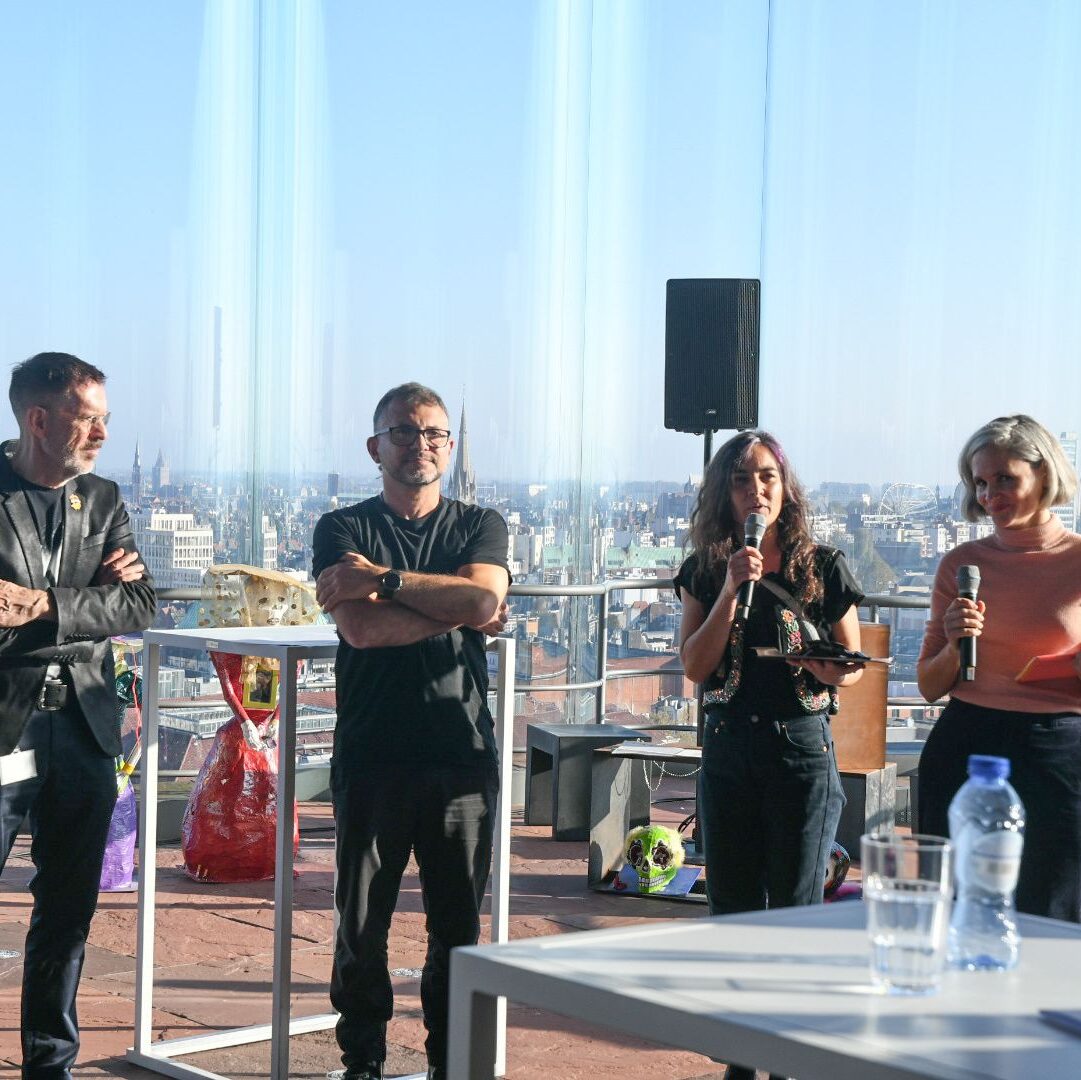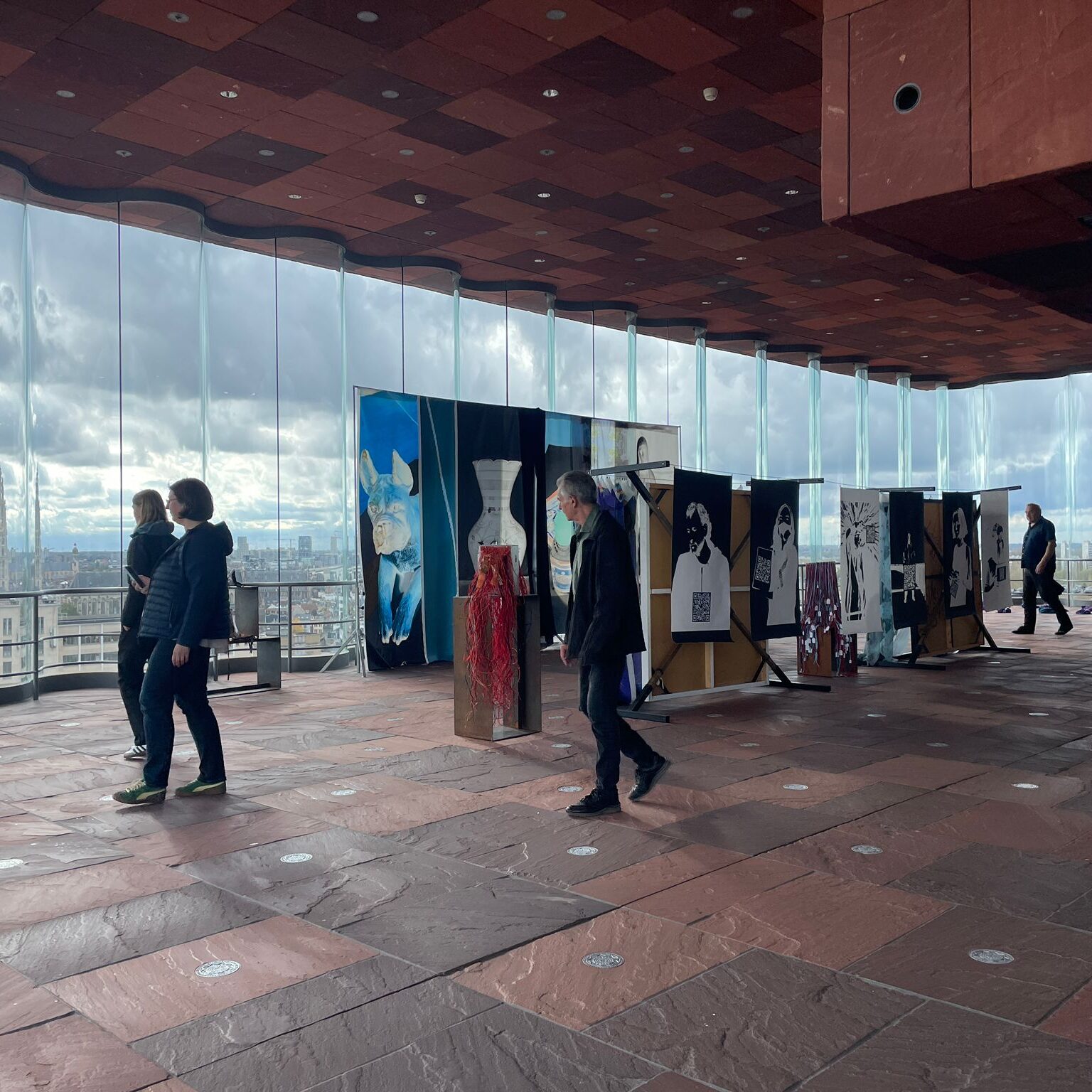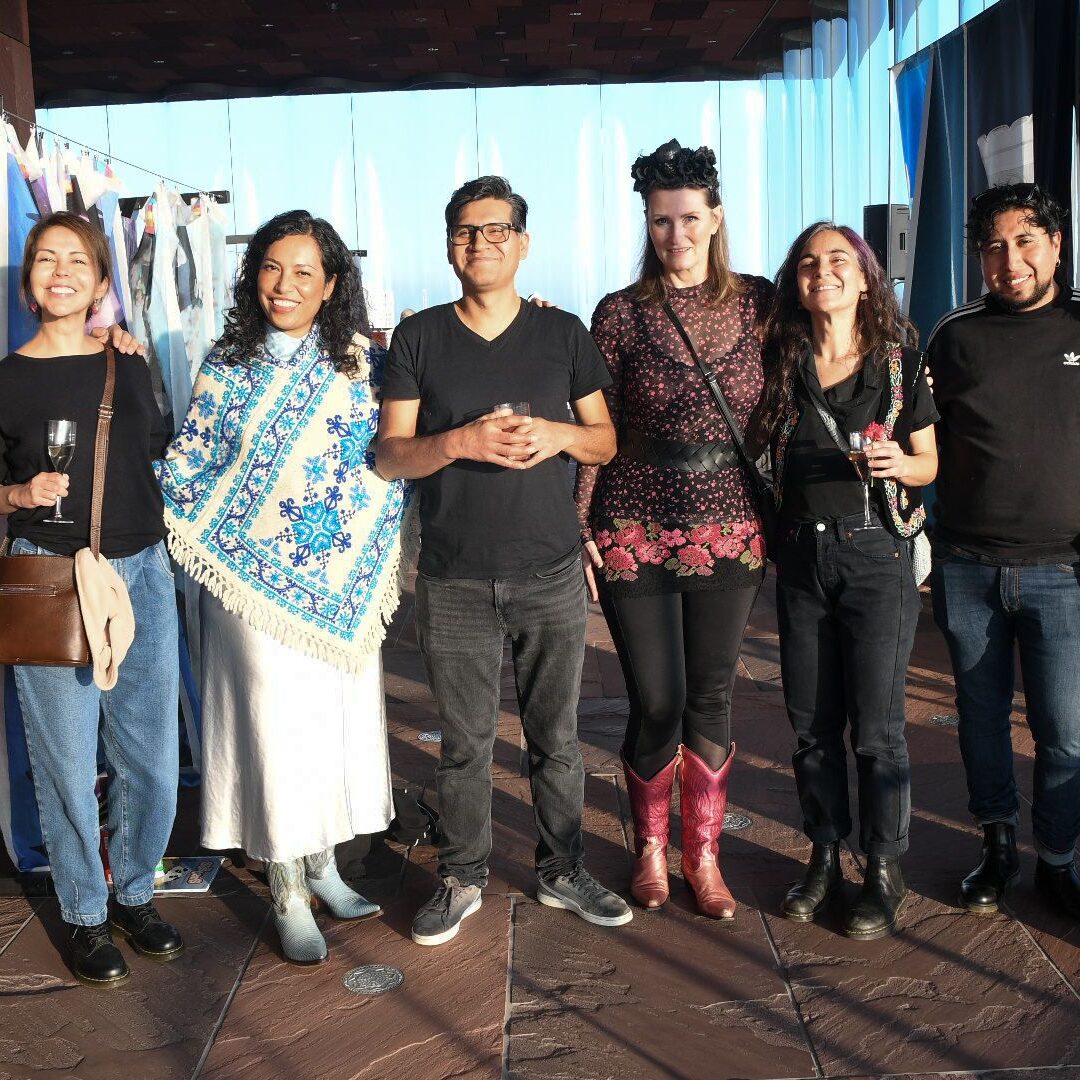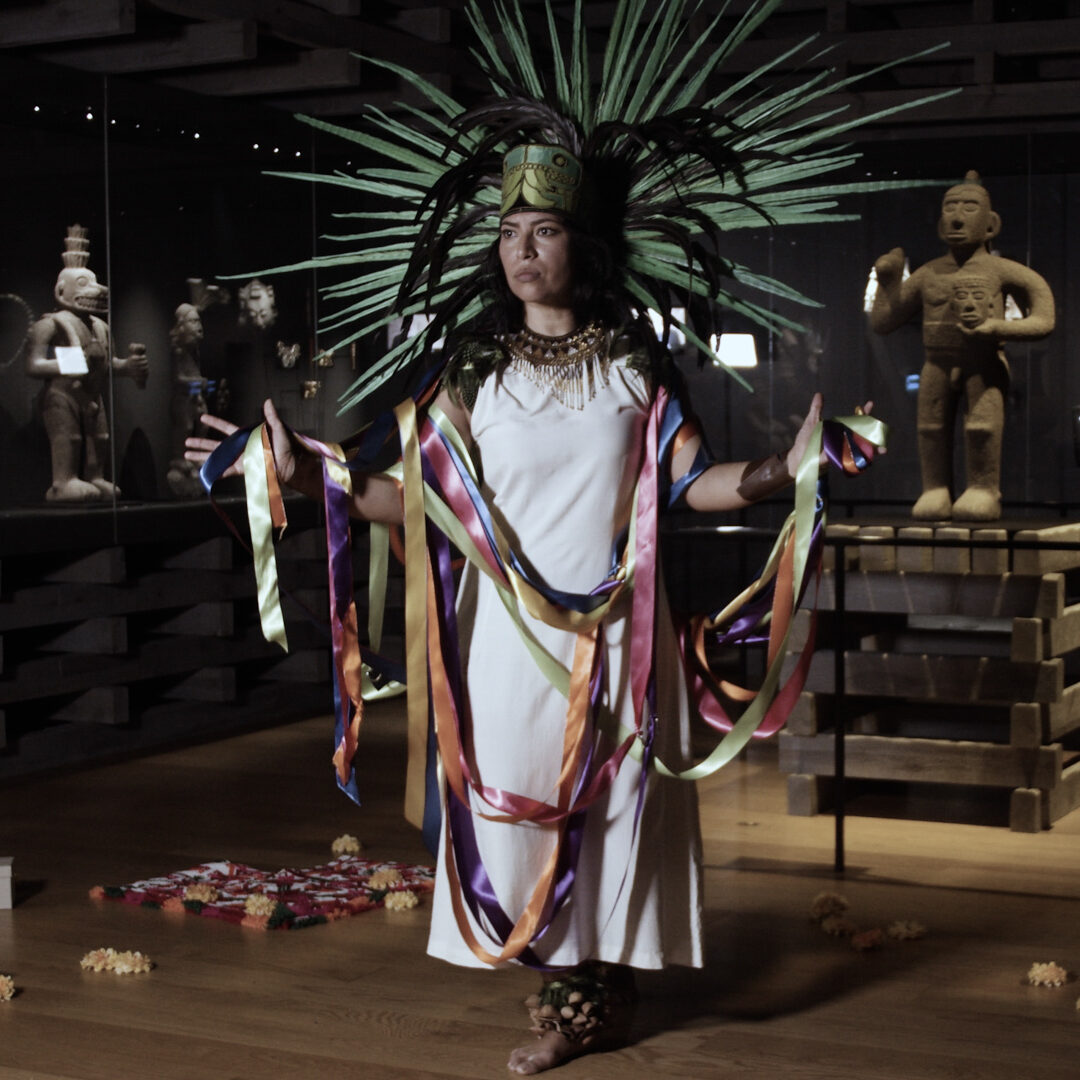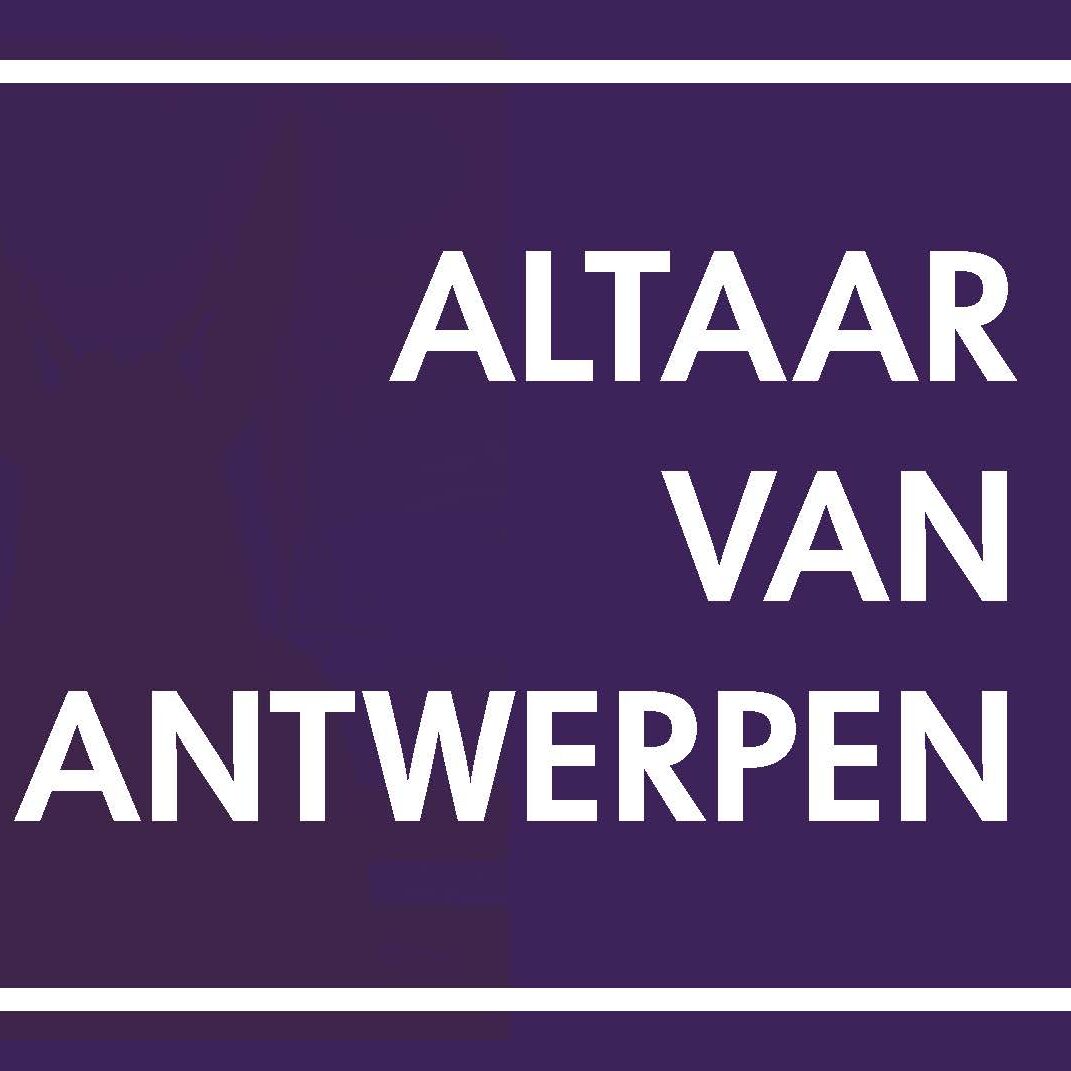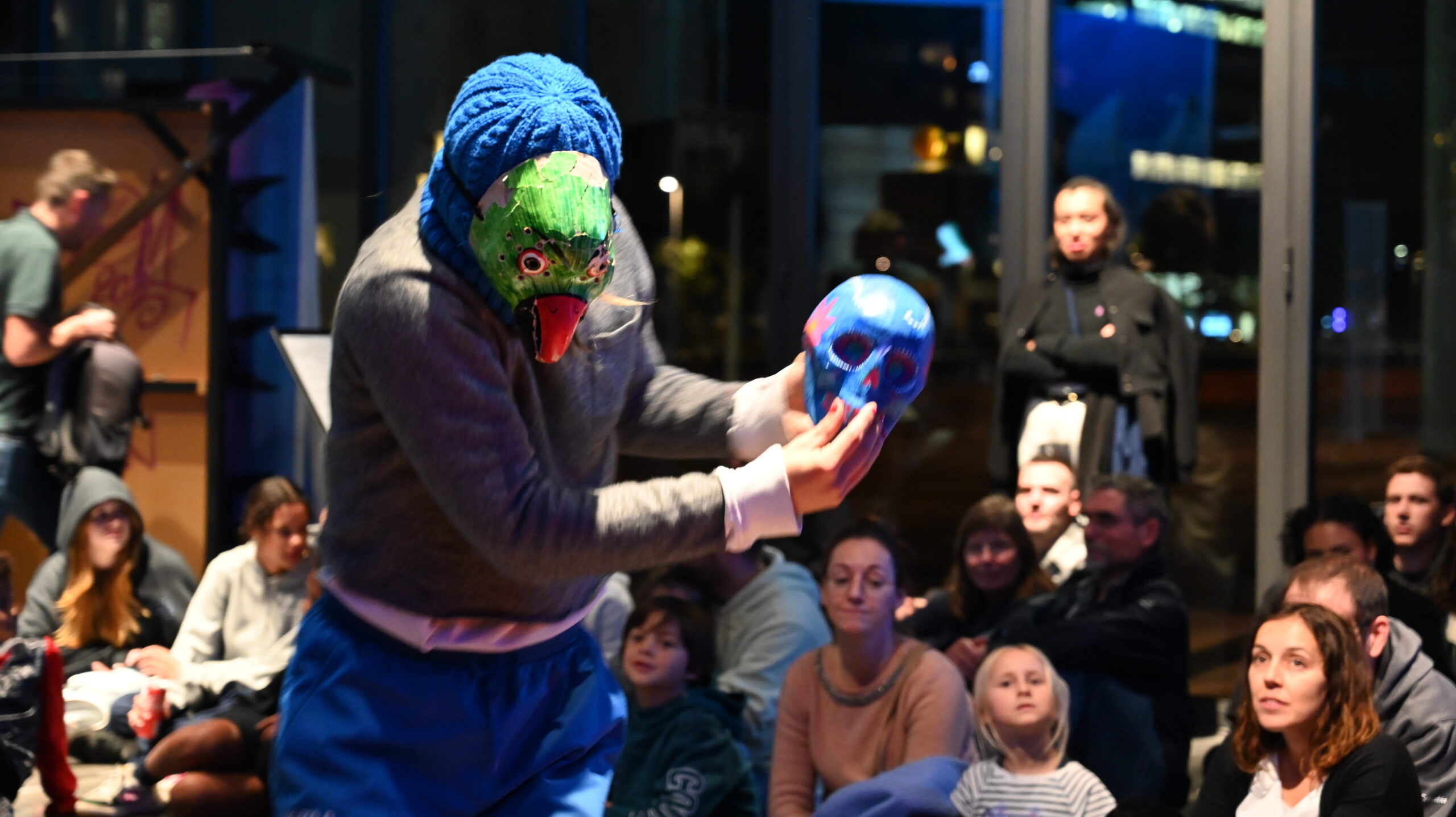
CREATING SPACE
FOR CULTURAL TRANSFORMATION
> powered by Mestizo Arts Platform <
The Altar of Antwerp
For 13 years, the Mestizo Collectief, part of the Mestizo Arts Platform (MAP), has led the Altar of Antwerp in collaboration with Het MAS museum and the Mexican Embassy in Belgium. This installation explores the concept of “loss” and how we relate to it. Many artists and visitors have contributed to this interactive work, which serves as a space to share traditions and stories from different cultures and times.
ALTAR 2024
SER-PARTE
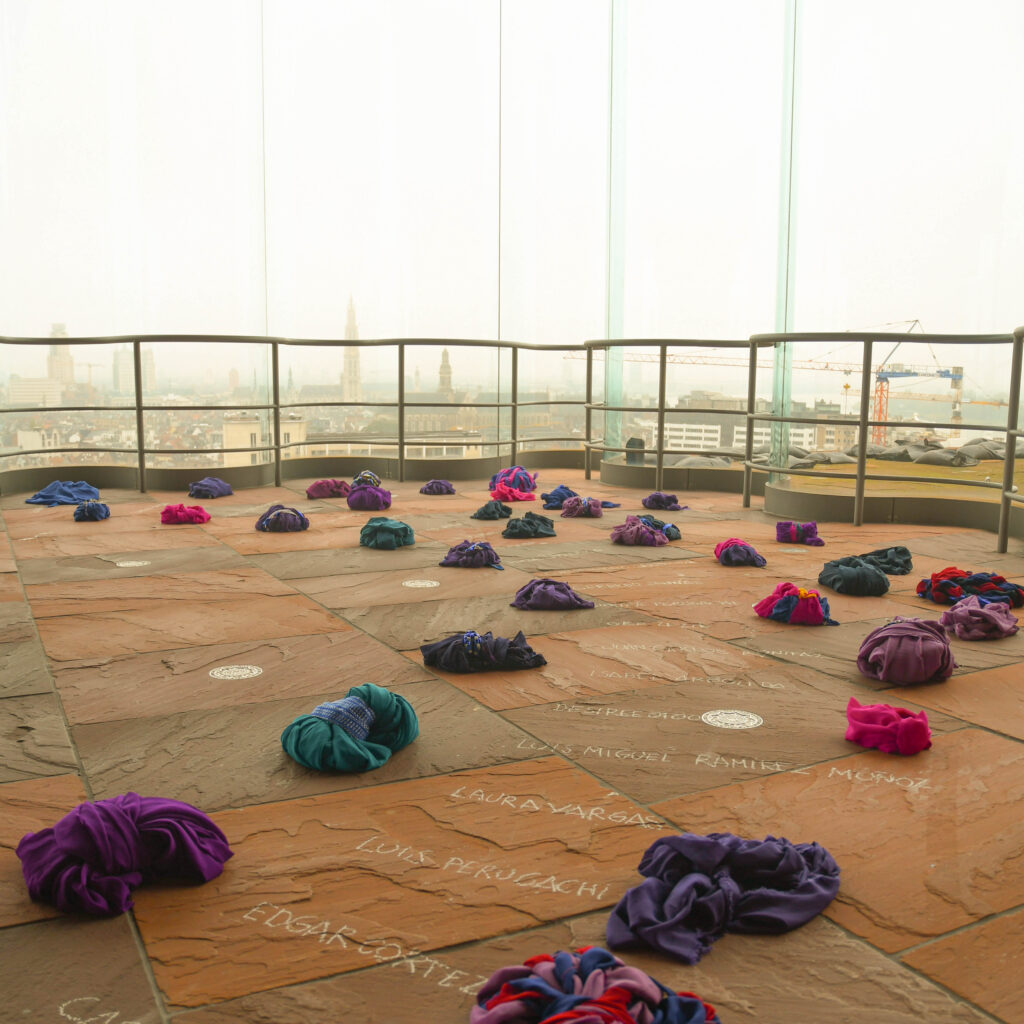
ALTAR 2023
FIESTA
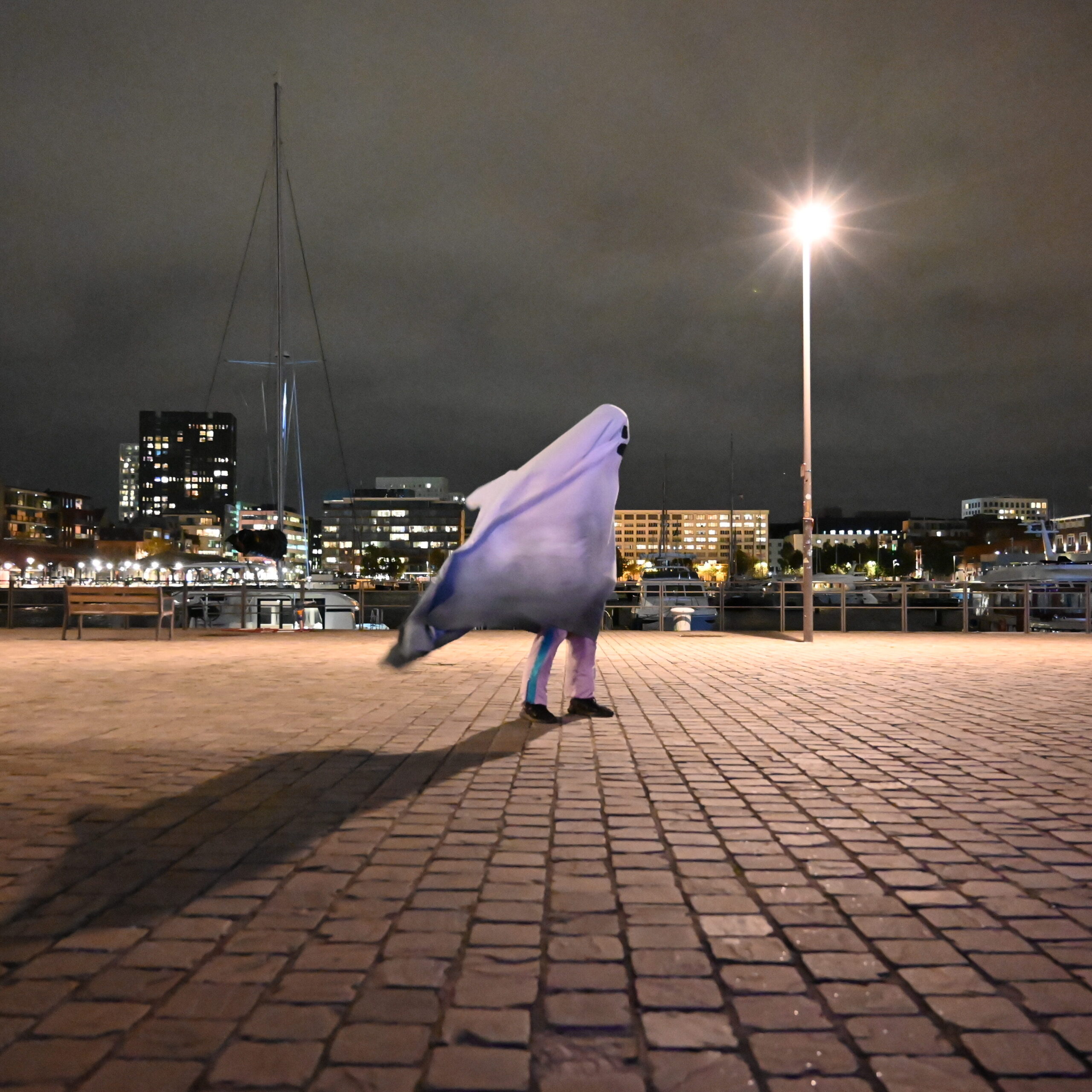
ALTAR 2022
RITUAL OF KNOTS
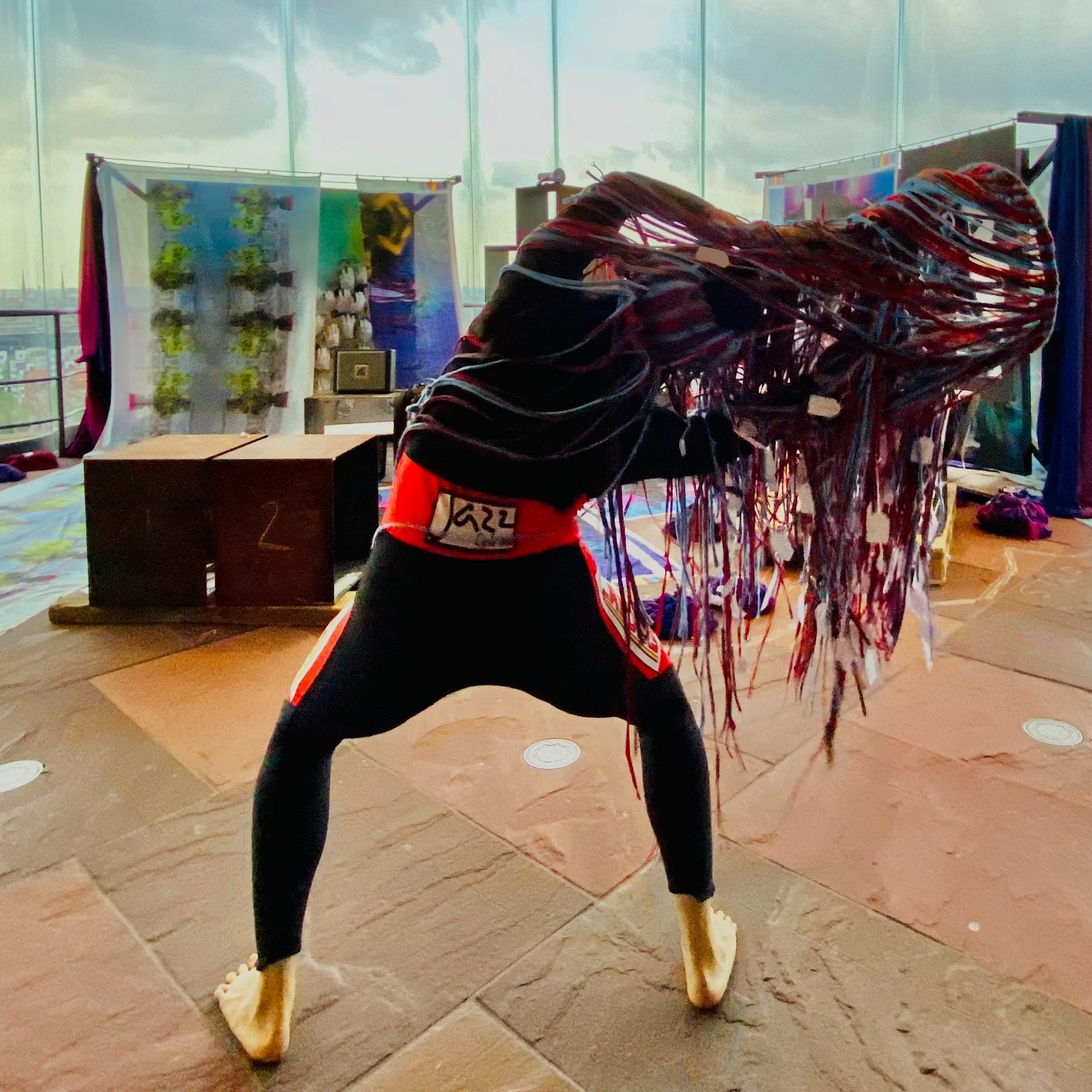
In 2024, the central theme of the Altar of Antwerp is Ser-Parte (Being Part), a concept that invites reflection on the act of participation and belonging. This edition pays tribute to all the people who have contributed to the creation of this space of memory and participation at MAS Museum. It is a recognition of the diverse voices, stories, and memories that have been part of the altar over the years, consolidating this project as a place of encounter and dialogue between cultures and generations.
In 2023, the offering for the Altar of Antwerp was La Fiesta, a celebration conceived not only as entertainment but also as a means of liberation from routine and a strategy for strengthening social cohesion. Additionally, the altar received “La Teja”, an Andean ritual sculpture that had been part of the Mundana Cultural Center (2018-2023. Photographs by Aimée Zito Lema, created for the Fiesta exhibition at Het MAS in 2018, were also part of the installation. The opening of the Altar of Antwerp included DJs, a mariachi band led by Román Santos, and excerpts from the performance La Fiesta by Désirée 0100 and Luis Miguel Ramírez Muñoz.
In 2022, the altar was inspired by the quipu, an ancient Incan technique for telling stories and storing knowledge. The interactive object Ritual of Knots was offered. Through this symbolism of ropes and knots, the artists sought to explore whether the visual tools of the past could be useful for communicating stories in the present. The experience concluded with a dance performance by Isabella Arboleda. Joana Rossi also conducted a family-oriented guided tour through the Dora and Paul Janssens Aerts collection, following the perspective presented in COLECCIÓN in 2021.
Since its inception, the Altar of Antwerp has engaged in dialogue with the Dora and Paul Janssens Aerts collection, beginning a process of symbolic restitution. The aim was to re-signify the objects from the collection, which are part of official history, without altering their essence, but rather the narratives around them. In 2021, COLECCIÓN was offered—a series of videos highlighting the importance of ancestral cultures in the contemporary identity of Latin Americans belonging to diasporas living in cities like Antwerp. The installation emphasized the contemporary influence of indigenous American cultures, underscoring their relevance in today’s identity.
In 2020, a playlist was created for the Altar of Antwerp, made up of songs that evoked memories and important moments for the city’s residents. This playlist, conceived by Gerardo Salinas, Lucila Guichón, and Joana Rossi, served as Antwerp’s collective soundtrack. Alongside the altar, the ALTARPHONE was installed, allowing people to add songs from the playlist within the installation space. Educational workshops, meetings, and classes were developed to explore memory and narrative empowerment through the playlist. Gerardo Salinas, along with artists Gea Zazil, Joana Rossi, Juan Carlos Bonifaz, Lucila Guichón, and Javier Perugachi, conducted a performative guided tour of the Dora and Paul Janssens Aerts collection of pre-Hispanic objects on the day of the Altar of Antwerp’s opening.
COLECCIÓN 1
INTRODUCTION
COLECCIÓN 2
ALTAR OF ANTWERP
COLECCIÓN 3
MURGA
COLECCIÓN 4
FOLK CELEBRATIONS
COLECCIÓN 5
TEXTILES
COLECCIÓN 6
TEMAZCAL
ALTAR 2019
PHOTOBOX
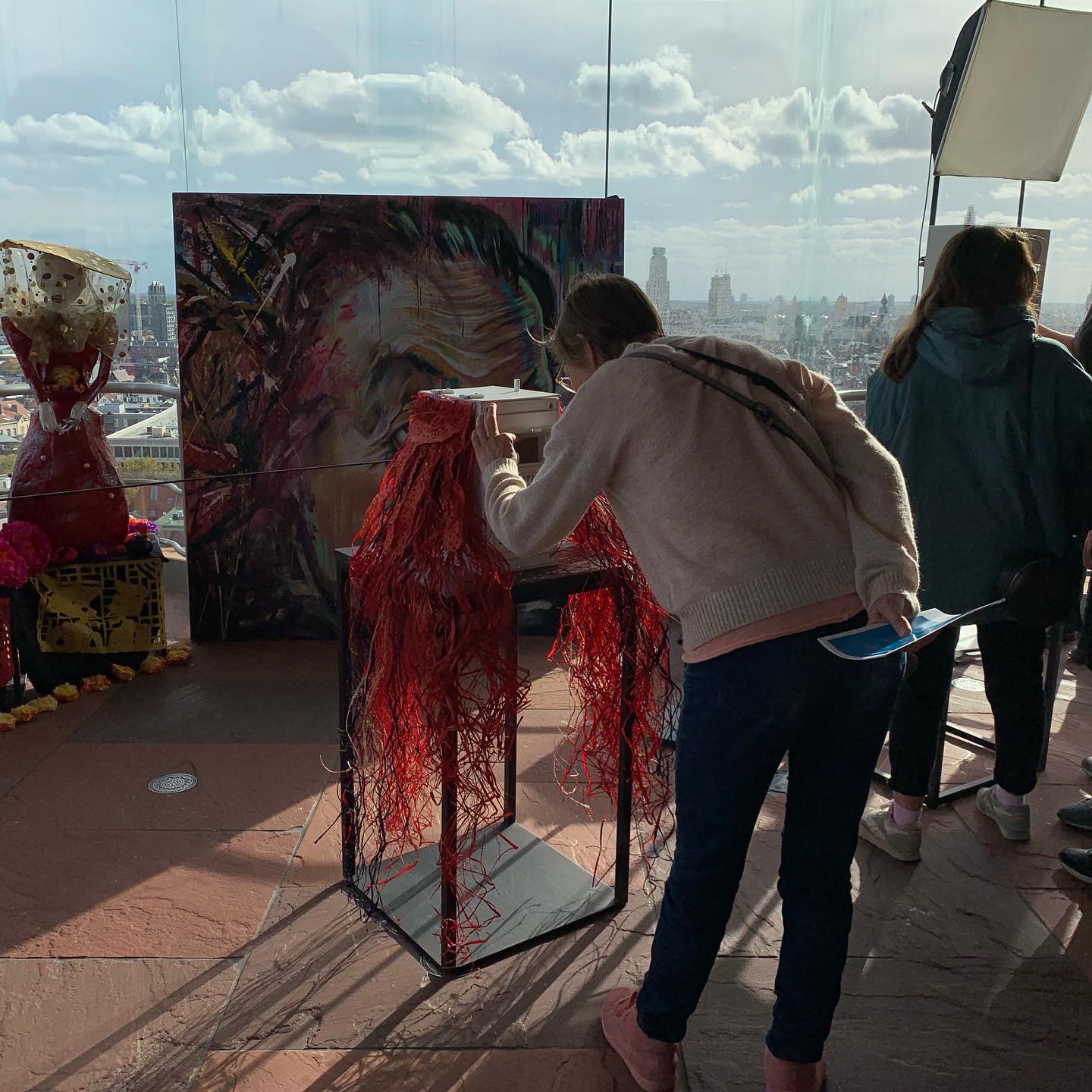
ALTAR 2018
SOUVENIRS OF MEMORY
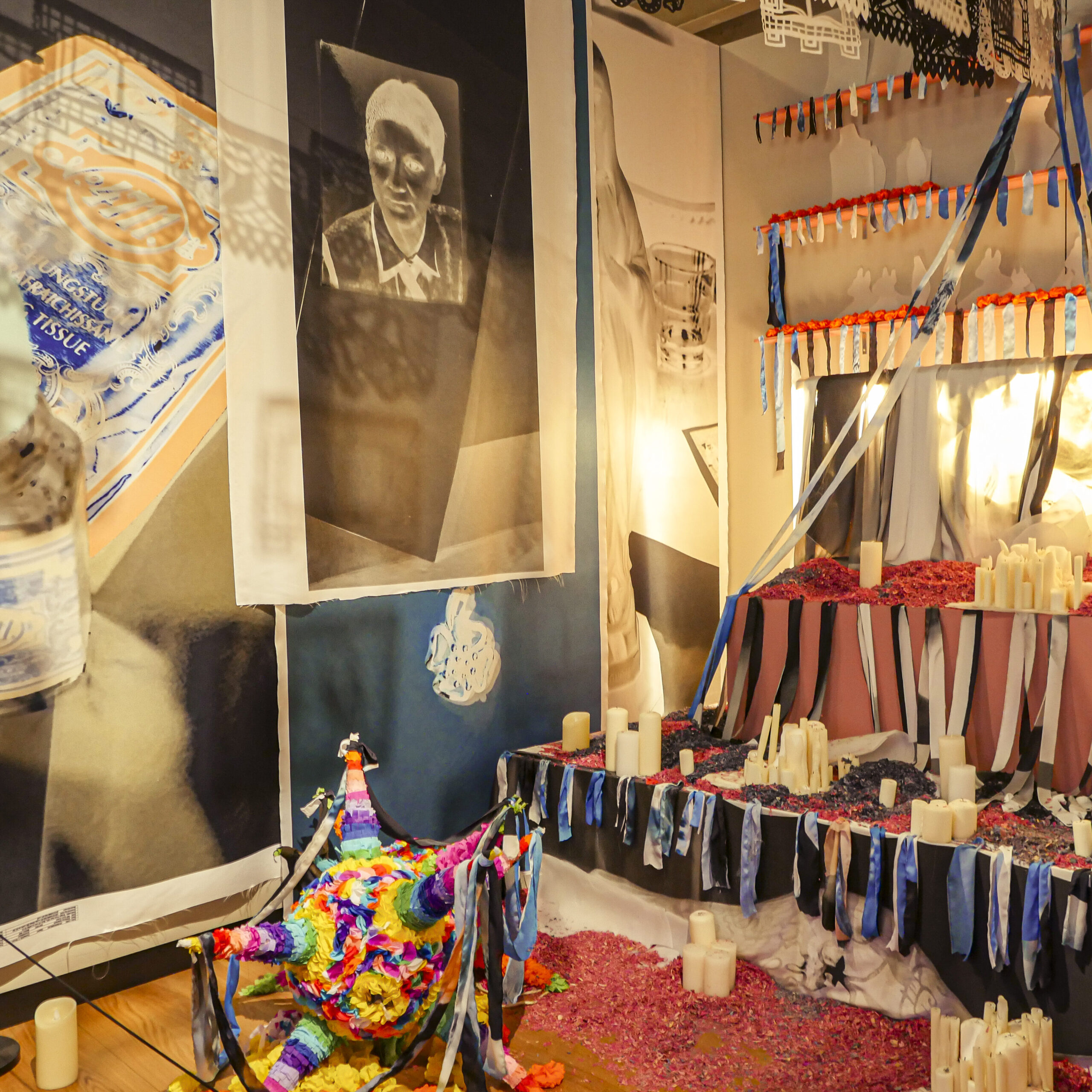
ALTAR 2017
STOP THE TIME
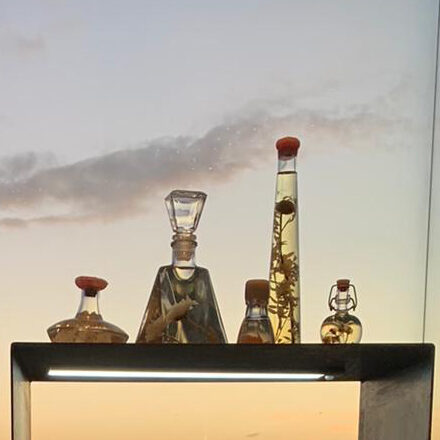
In 2019, photographer Cuauhtémoc Garmendia added his work Ricardo (an invented name) to the Altar de Amberes, as a symbol of human rights defenders who have been victims of violence. At the same time, an exhibition on loss was organized at the Permeke library. Additionally, artists Lucila Guichón and Gerardo Salinas proposed an interactive action where visitors could take a photograph in a photo booth and write a memory on the back, which would then be stored in the Photobox, a box-object that has since become part of the Altar de Amberes.
In 2018, Aimée Zito Lema created an installation based on photographs of objects and stories about deceased loved ones that the citizens of Antwerp contributed to the Altar de Amberes in 2017. The installation was presented in the Fiesta exhibition at Het MAS and remained part of this show until 2023 before being included in the Altar de Amberes. Rojo Córdoba, a slam poet from Mexico City, worked for three months on the project The Belgican Link, creating a connection between Brussels and Mexico City. His research culminated in a “psychomagical” act at the KVS in Brussels. At Het MAS, he performed part of The Belgican Link, a poem about Jesús Malverde, a figure from contemporary Mexican mythology. The megaphone he used throughout the process was offered to the Altar de Amberes.
In 2017, Joana Rossi presented Stopping Time, a work exploring the relationship between time and memory. The installation for the Altar de Amberes consisted of jars containing wildflowers in formaldehyde, in which citizens of Antwerp could deposit objects in memory of their loved ones. These objects became a tangible reflection of memory and the passage of time.
ALTAR 2016
OUR MEMORY MAPPED OUT
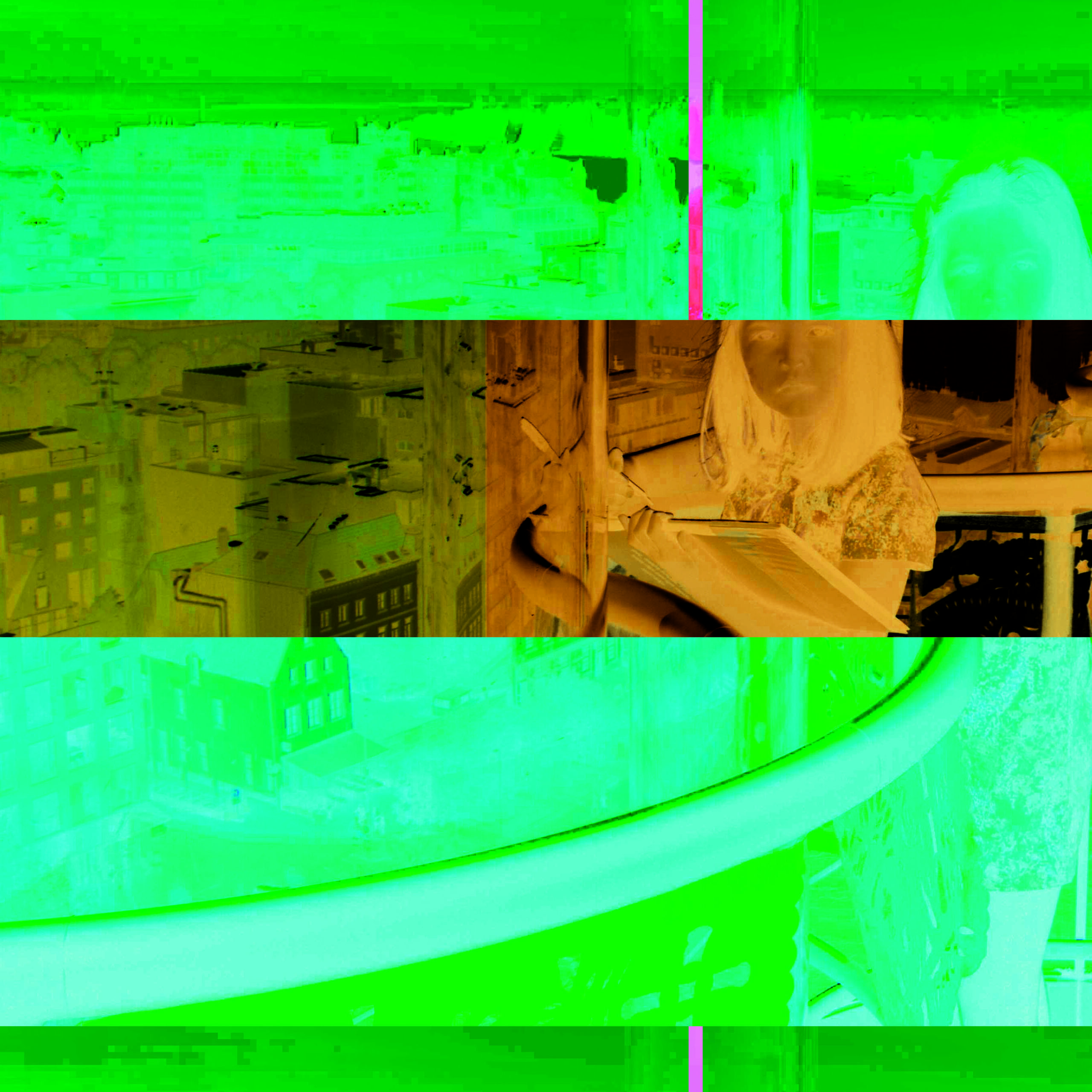
ALTAR 2015
EPHEMERALITY IS KEY
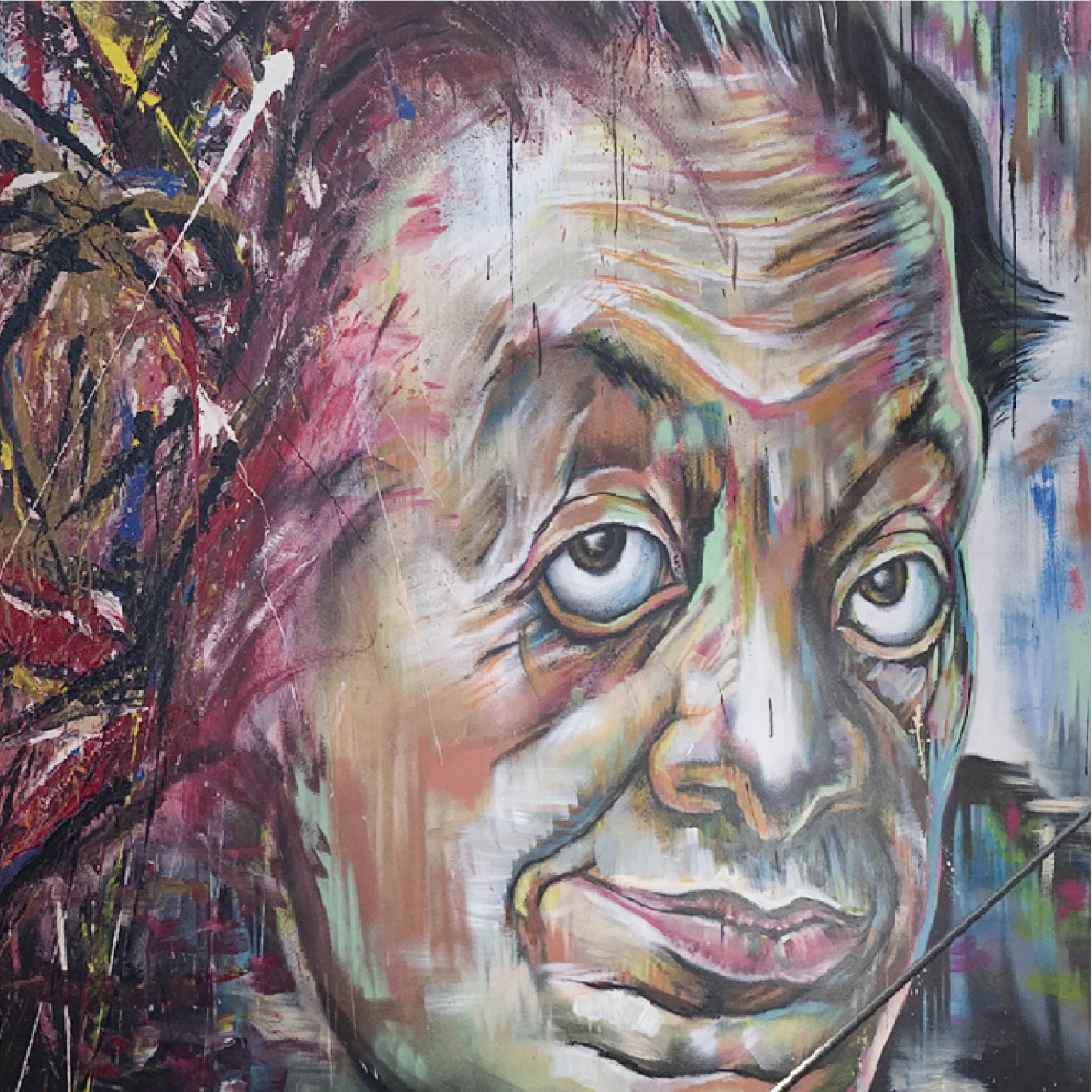
ALTAR 2014
KALEIDOSCOPE MEMORIES
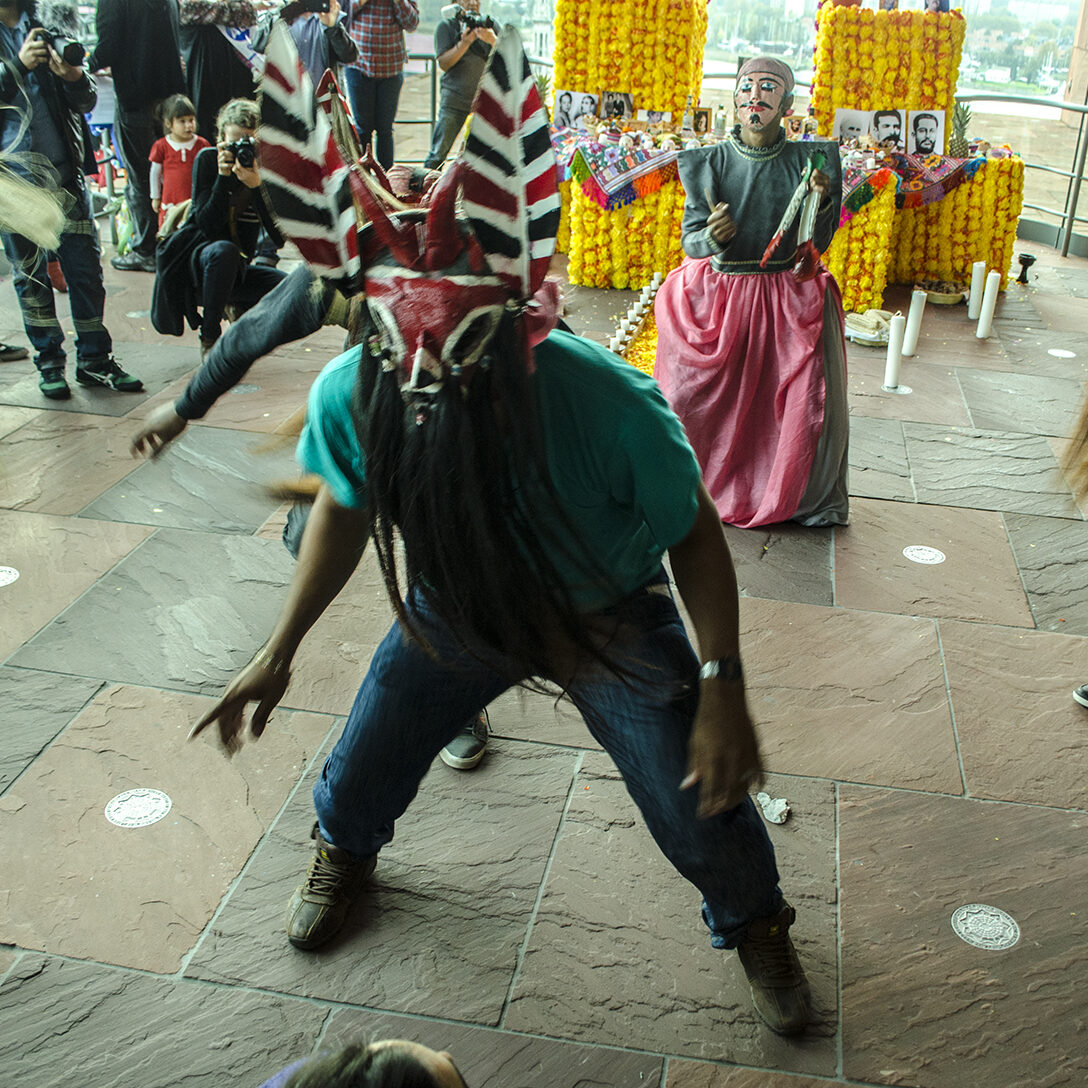
During the first six years, the vernissage of the Altar de Amberes was part of the Mestizo Arts Festival (MAF). The themes and artists of the festival were also reflected in the Altar. In 2016, the central theme was cartography, both for the festival and for the Altar de Amberes. Under the name MAPping, participants were invited to explore the boundaries of the city of Antwerp as a dynamic space, filled with memories and personal experiences. Artist Lucila Guichón designed a map where both artists and the public traced their life paths. Younes van den Broeck, alias Spitler, and Yentl de Werdt performed, while Jelle Jespers designed the publication MAPping Antwerpen, which documented the creative process of the festival.
In 2015, street art was incorporated into the narrative of the Altar of Antwerp under the title “MURAL, the wall as a canvas.” Artists from Antwerp, Mexico, and Argentina created murals inspired by the work of Mexican muralist Diego Rivera (1886-1957) in five art centers and a train station: Arenberg, De Studio, wp Zimmer, KVS, ‘t Arsenaal, KOP vzw, and Luchtbal station. Bart Boudewijns, known as SMOK, created a portrait of Rivera for the altar, while Elizabeth Carrazco and Alex Córdova made a commemorative piece about the murdered Ayotzinapa students.
2014 was a year marked by reflection on death and mourning rituals. Argentine artist Bárbara Echevarría led an intervention on the altar, creating an installation called “Memories of the Kaleidoscope,” which intimately explored stories of loss. Four more artists participated in this project: Sumeya Yaman, Melek Arslan, Lorenzo De Brabandere, and Ismail L’hamiti, under the direction of filmmaker Alex Córdova, who documented the creative process. That year, the traditional altar was made with typical elements from the state of Guerrero in Mexico, adorned with 3,500 handmade flowers. Jeanette Rojas Dib and Natalia Velazco Placencia built it. Two performances were also held: one by Bárbara Echevarría and another by Los Diablos del Cerro de las Tablas, a dance company from Guerrero. The exhibition “Mexican Silver from Taxco” was presented, and in that context, a delegation of Mexicans living in Antwerp read a manifesto in solidarity with the disappeared students of Ayotzinapa.
ALTAR 2013
MEXICAN SKULLS
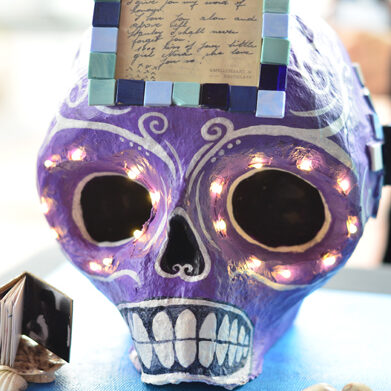
ALTAR 2012
100 YEARS OF CATRINA
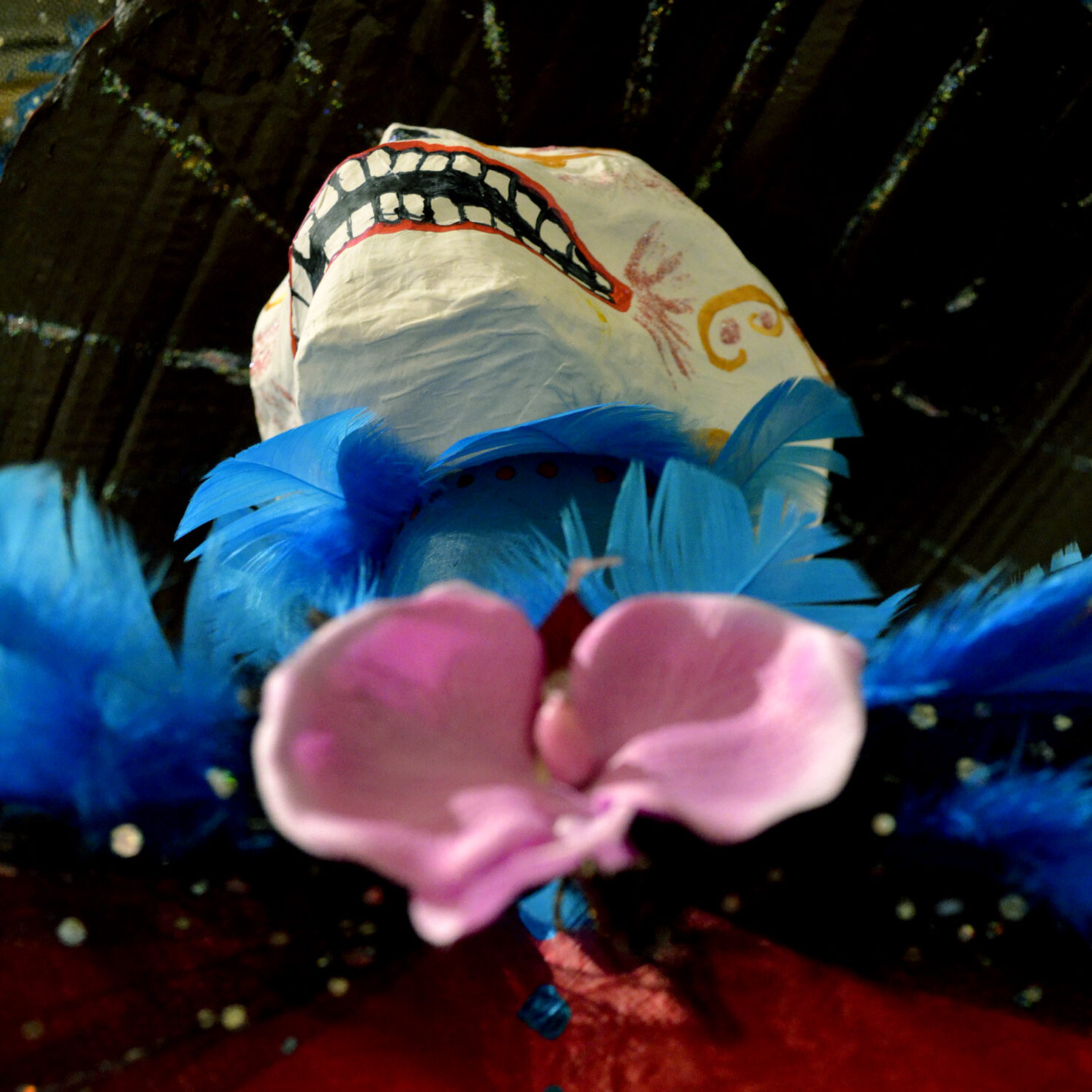
ALTAR 2011
THE INTUITIVE ALTAR
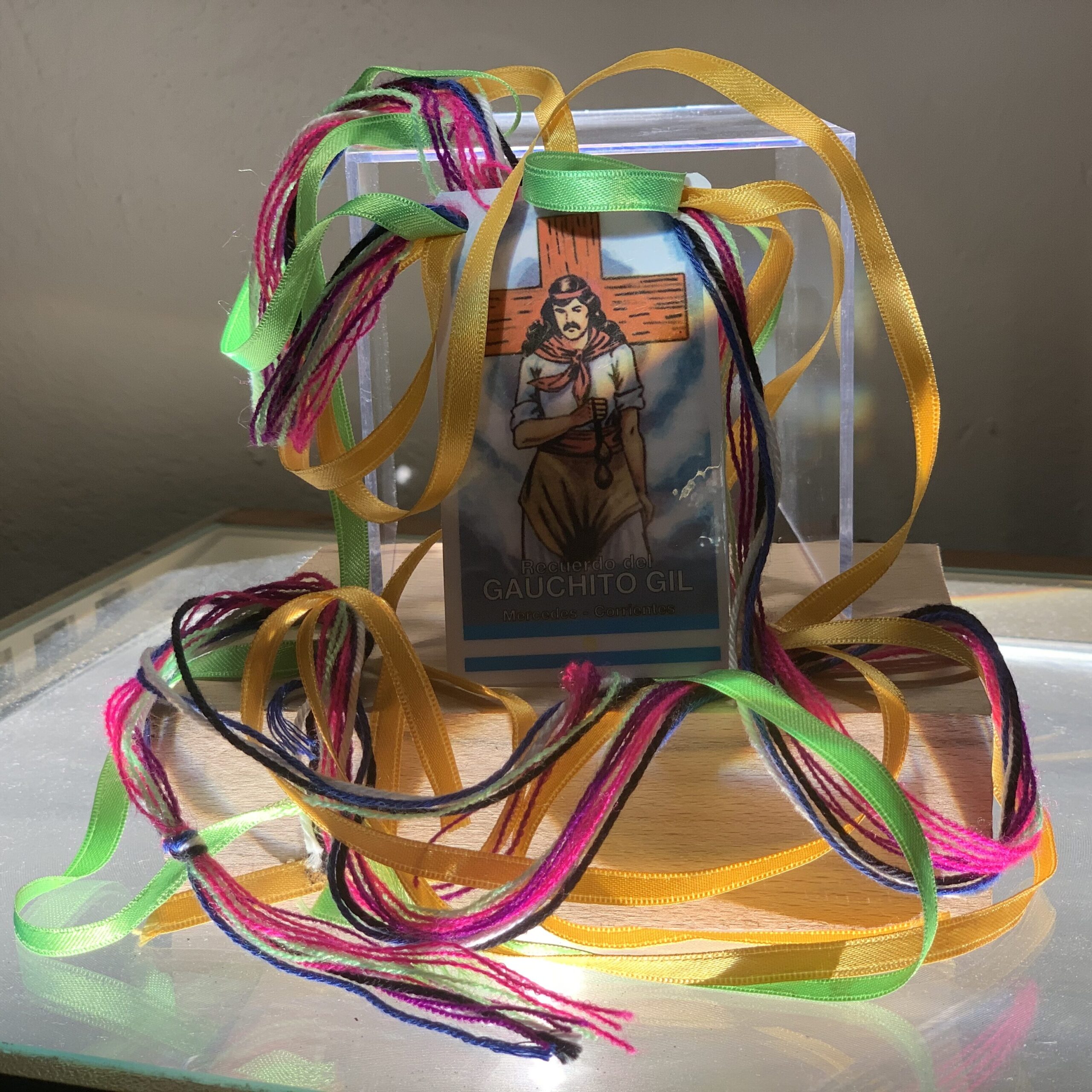
In 2013, Patricia López organized a second participatory workshop, adding a new dimension to the altar. This workshop focused on traditional Mexican skulls previously created by Patricia. That year, for the first time, a traditional Mexican altar was set up alongside the Altar of Antwerp, thanks to the collaboration of the Mexican Embassy and Martha Carmona, deputy director of the National Museum of Anthropology in Mexico City, who also gave a lecture on the Day of the Dead. Participants included: Bárbara Bervoets, Luisa Bernal, Joana Rossi, Rocío del Moral, Marina Leal, Jessica van Wellen, Ken Bergers, and Gaby van den Abeele.
The Altar of Antwerp arrived at the Museum Aan de Stroom (MAS) in 2012. Patricia López was invited again, this time to develop a collaborative workshop with six participants. Together, they created different “Catrinas,” inspired by the famous engraving by José Guadalupe Posada. The workshop further enriched the altar, adding a new visual approach to this collective work. Participants included: Elizabeth Carrazco, Luisa Bernal, Ken Bergers, Rocio Del Moral, Jasper Jeensma, and Gaby van den Abeele.
In 2011, Belgian-Mexican artist Patricia López presented her exhibition “Las Cajas” in the Arenberg hall, as part of the Mestizo Arts Festival. In this context, Mestizo Collectief introduced the Altar of Antwerp for the first time, an installation that brought together elements from various Latin American cultures, such as the figure of Gauchito Gil, a popular saint in Argentina. After the festival, Mestizo Collectief decided to turn the altar into a permanent installation, which over the years has evolved, reflecting an ever-changing Antwerp.
Building the heritage of the future
20 YEARS MESTIZ0 COLLECTIVE / MESTIZO ARTS PLATFORM
Cultural Transformation
- Cultural Institutions
- Audience
- Artists
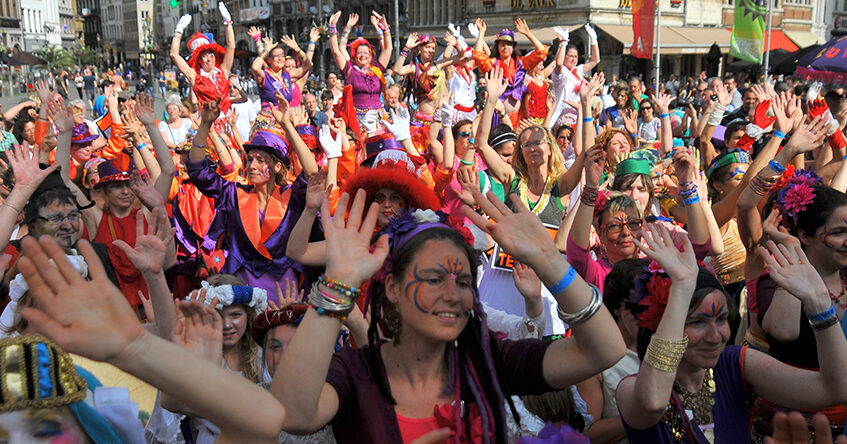
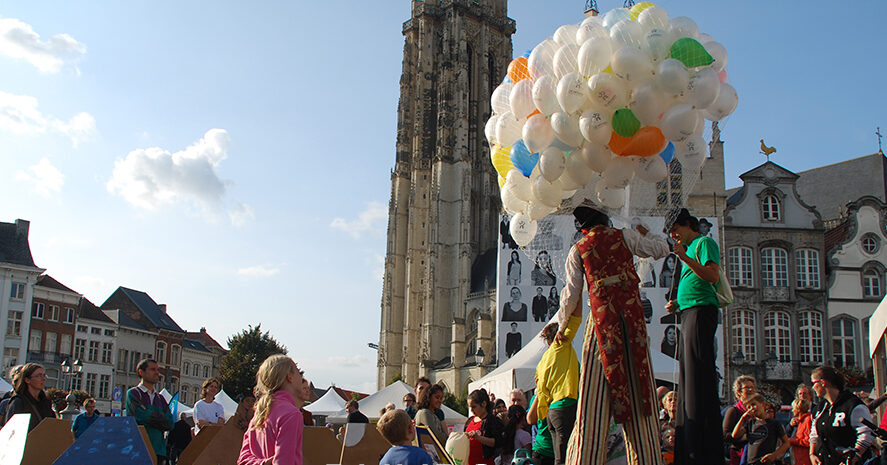
Experience
- Participation
- New narratives
- Experimental formats
Powered by Mestizo Arts Platform
© 2024

